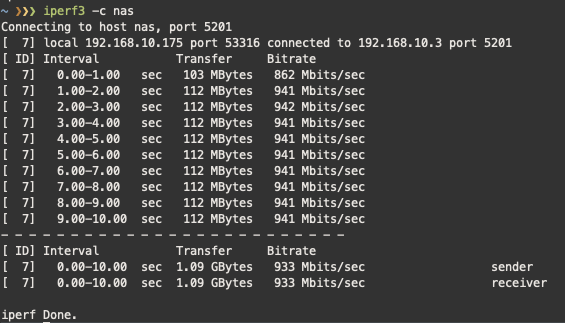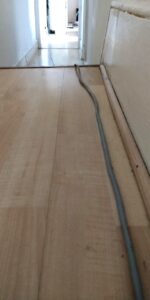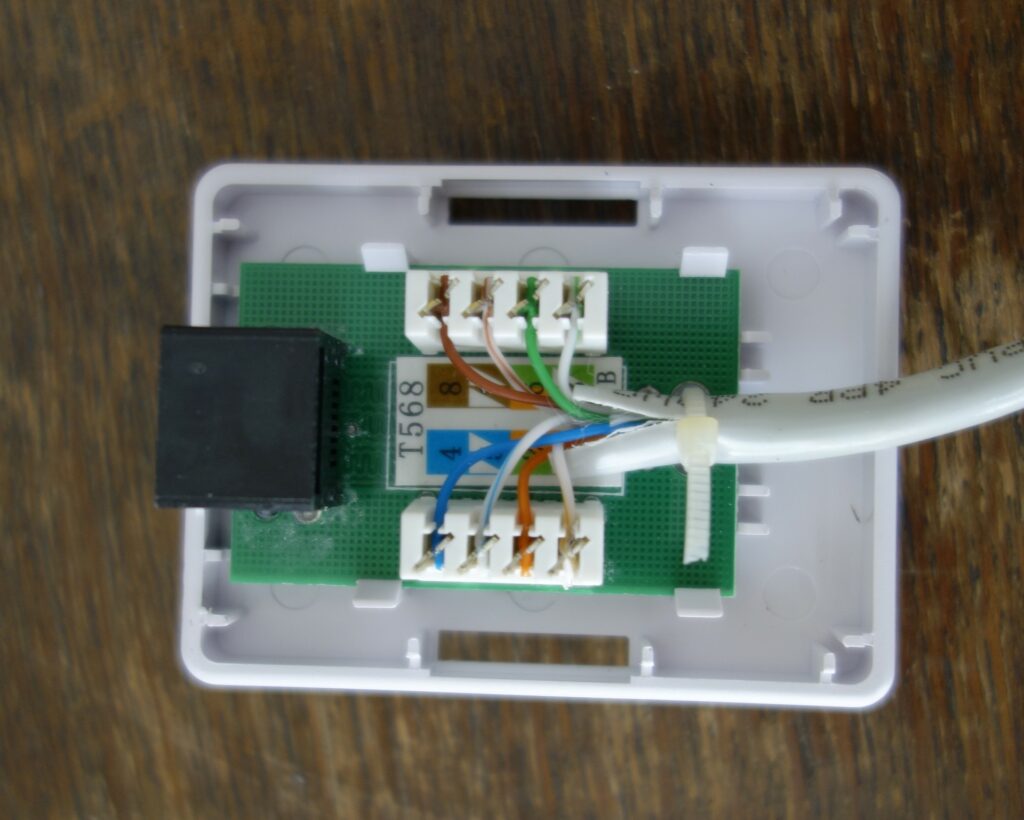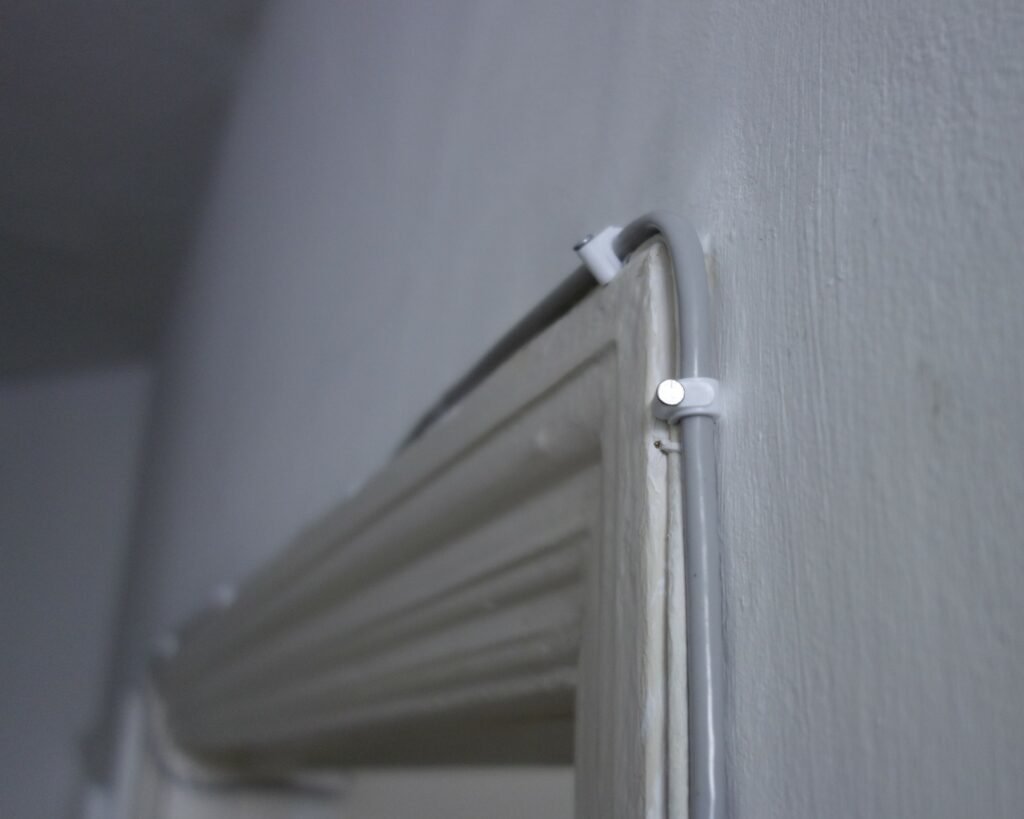My partner and I live in a 2-bedroom flat with our very young daughter. After a couple of weeks of working from the living room, which is where the WiFi is, and where I typically keep my computer, I decided, for the good of our relationship, to move my office to the spare bedroom.
There’s just one problem:

I’m not alone in spending a lot more time working from home recently, and if my Slack calls at work are anything to go by, I’m also not alone in struggling with poor WiFi reception. Urban areas tend to be densely packed with WiFi signals at the best of times, let alone while everyone’s cooped up at home full-time.
In my case, the WiFi connection in the spare bedroom is totally unusable for work, but continuing to work from the lounge would risk my relationship (and possibly my general safety).
So what’s a self-isolating telecommuter to do?
Options
One option is a WiFi extender, but these communicate wirelessly, and are never going to be as fast as copper. They’re not particularly cheap either.
Wired is best, so I ran a 10m patch lead across the floor and down the hallway. It just made it, with very little slack. The result:

Success! I can do work from the bedroom now.
But there’s another problem:

In addition to being a trip hazard, this is ugly.
My relationship is not yet saved.
Edit: As has been suggested post-publication, another option is powerline ethernet adaptors, which I didn’t give due consideration; in my head the cost and performance ratio was more inferior to dedicated cabling than I gave it credit for; these are probably fine for most people!
Installing a Cat5e ethernet cable
Our home is a ground-floor flat in a subdivided maisonette. Ideally I’d add wall plates and run cabling behind the walls, but it’s doubtful that there’s a ceiling cavity to run the cables through.
There are broadband and copper telephone cables running along the skirting boards though, so I decided to add one more.
The Bill of Materials

| Approx. cost | Amazon link | eBay link | |
| Cat5e solid-core Ethernet cable (50m) | £16 | https://amzn.to/2UmcPZ7 | https://www.ebay.co.uk/itm/153537740805 |
| Cat5e single-port surface mount outlet box x2 | £9 | https://amzn.to/2wsEluP | https://www.ebay.co.uk/itm/201170464059 |
| Cable clips with fixing nails | £2 | https://amzn.to/3dx2Zeb | https://www.ebay.co.uk/itm/390978002392 |
| Punch-down tool* (optional) | £5 | https://amzn.to/2UEEQtJ | https://www.ebay.co.uk/itm/163933011924 |
| Total | £32 |
NB: the Amazon links are affiliate links; I’ll make a (very tiny) amount if you purchase something after clicking one of them
Edit: If your landlord is squeamish about nailing cable to skirting boards and door-frames, these are a good option (thanks @digitalpardoe).
Planning the route
It’s always a good idea to measure the run, including every turn, so you know how much cable you need. Then add a bit of slack on the end to give yourself a healthy margin for error.
Gigabit ethernet is only designed to work over runs of up to 100m, so make sure that no two active, powered points have more than this length of cable between them. This includes cables you plug into the outlet by the way, so it’s good practice to stay under 80m, just in case some joker decides to connect a 10m cable at each end.
If like me you can’t cut into the walls and run it through a celing cavity, there are other options. Many cablers nail to skirting boards, and sometimes you can run under the carpet. Have a look at other cabling in your home (particularly telephone, TV and broadband) and see what they’ve done. I think it’s best to follow along these existing runs where possible, so you don’t spoil otherwise clean parts of the house.
Avoid running the cable parallel to electrical wiring – mains voltage can induce a current and degrade the signal. If you must cable close to electrical wires, cross them perpendicularly.
Wiring the outlets
My Mate VINCE (not my mate, just his Youtube name) has a great video tutorial on wiring the outlets (and many other videos on cabling in general), but even without a video there are visual guides on the outlets themselves. Just follow the “B” markings (apparently it’s more common these days), untwist as little wire as possible, and you can’t go too wrong.

The punching tool that came with the crimping tool was garbage, but I’m not sure what I expected when the whole set was £4.99. The metal part came out of the plastic holder after just a couple of uses:

Fortunately, it was still usable, as you just need to be able to push down on it to get the wire in place, so it did what I needed it to.
In his video, my mate Vince has a proper professional punch tool which cuts the excess wire for you. I just used a box-cutter knife, but it’s definitely worth getting a proper punch tool if you’re going to be doing this a lot!
Running the cable
A rule of thumb is to place cable clips one hammer-length apart.
While going around corners, I placed cable clips close to either side of the bend to hold it in place:

You’ll probably need more clips than you think, even if you measured correctly. Get an extra pack.
I also found it helpful to keep the cable taught as I went to avoid sagging.
Generally I would suggest not cutting the cable off the reel until you’re at the destination, but I was a bit worried about the bends going through this doorway:

If it was broken (fortunately it wasn’t), I figured it was best to find out as early as possible, so I cut the cable off the reel and crimped a temporary RJ45 connector on to the end.
This allowed me to test it before completing the run. If you do this, make sure you leave plenty of slack, and wire it up the same way (A or B) as your outlet, or you could inadvertently create a crossover cable (which would have to be connected directly to another computer, rather than a router or switch). My Mate VINCE covers this in the video.
Also, make sure nothing is connected at either end while you are running the cable – damage could create a short, which could potentially damage your equipment.
Conclusion
It worked. I am working from the other side of the house, and my family is, so far, intact.

Compared to adding a WiFi extender, running cable is much cheaper, and results in a much faster connection.
It certainly isn’t easier, but if you’re at all handy or a D-I-Y type, running cat5e in your home is a no-brainer.
It might just save your relationship too.


Impressive! Thanks for the article
this will surely help